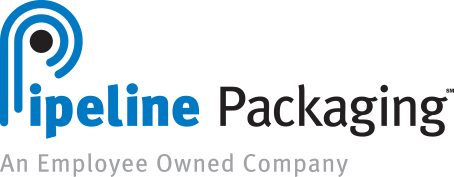UN markings play a crucial role in identifying containers with hazardous materials, which is why they’ve become a focus area for the Department of Transportation (DOT). In recent years, the DOT has spent more time tracking down companies that are non-compliant with current UN standards on their packaging. This can land your company in trouble if your UN markings aren’t up to code.
Just how much can a hazmat packaging issue cost your business? Penalties can range from as low as $5,000 and upwards of hundreds of thousands of dollars depending on the severity of the issue. In addition, your company could be subject to potential lawsuits, such as if a leak from your packaging caused a fire that caused one or multiple people to get hurt.
Some companies have packaging engineers and professionals with Dangerous Goods Certification or some other hazmat packaging training to help them invest in the right packaging and mark them properly. However, other businesses don’t have personnel with the proper training to know the ins and outs of UN markings or to keep up with those requirements. As such, we’ve put together a quick breakdown of some common issues that may land you in trouble with the DOT.
Identify the Right Performance Level for Your Material’s Packing Group

- I – High hazard level
- II – Medium hazard level
- III – Low hazard level
Title 49 of the Code of Federal Regulations (CFR) has a hazardous materials table under §172.101 that you can use to identify the packing group of various hazardous materials. After that, you can utilize the following letters to indicate the performance level on your UN marking:
- X – High Hazard Level (Can be used for Groups I, II and III)
- Y – Medium Hazard Level (Can be used for Groups II and III)
- Z – Low Hazard Level (Can be used for Group III)
Of course, you’ll also need to make sure that your UN markings are more than just for show. You’ll need to make sure your containers meet the CFR requirements for those materials and their hazard levels, plus any other packaging requirements set by other shippers.
Have an SDS on File for Every Hazardous Material
Another place that you can find packing group information and other key UN marking details is on a safety data sheet (SDS) for your specific hazardous materials. Not only is an SDS helpful for making accurate UN markings, your company can also get in trouble if it doesn’t have one.
An SDS is more than just a helpful tool; the DOT and OSHA both require you to have an SDS for each hazmat material your company handles. According to OSHA, an SDS must be “readily accessible to employees for all hazardous chemicals in their workplace,” whether they’re in an available binder, computer file, or some other place where employees can access without leaving work. If you don’t have them on file, both DOT and OSHA can hit you with some costly fines if they ever decide to audit your business.
Re-Test Any Packaging That’s Been Sitting Out for a While
Just because a container may have followed a specific UN marking in the past doesn’t mean it will in the present. It’s not uncommon for containers to go unused for a long time, whether it’s because of a slow season or some other cause for delay. This can result in containers made for hazardous materials to sit around before you’re ready to fill and ship them. Unfortunately, you’ll want to double check to make sure that container is still good to use for your hazardous materials.
There are a couple of reasons that your containers may not meet your required UN marking standards after going empty for a while. If you’ve left those containers outside, the persistent exposure to various temperatures and UV rays may have an impact on them. Even containers stored inside may be subject to something like rust if there was a leaky roof or the space wasn’t climate controlled. These changes may be enough to lower the performance level of the container or render it unusable in the eyes of the DOT.
To address this scenario, test any older packaging before you use it for hazardous materials. There’s no regulation saying you must test older containers, but there’s always a chance that DOT will test your packaging and fail you. Of course, there’s always the possibility that your containers are fine in the end. Still, it’s better to double check than to find out the hard way.
Work with a Packaging Supplier that Can Help Guide You Through Hazmat Shipping
It’s not always easy to make sure that your packaging is up to DOT standards, which is why Pipeline Packaging helps you through the process when you need assistance. We have experts with hazmat training on staff who can provide guidance where necessary. We’ve also put together the following resources for UN markings:
Are you in need of packaging solutions that go beyond providing basic products? At Pipeline, we strive to help our customers through a variety of value-added solutions that help them invest in quality packaging products, improve processes, and reduce costs. Check out our available packaging products online or contact us today to talk to one of our experts today.


